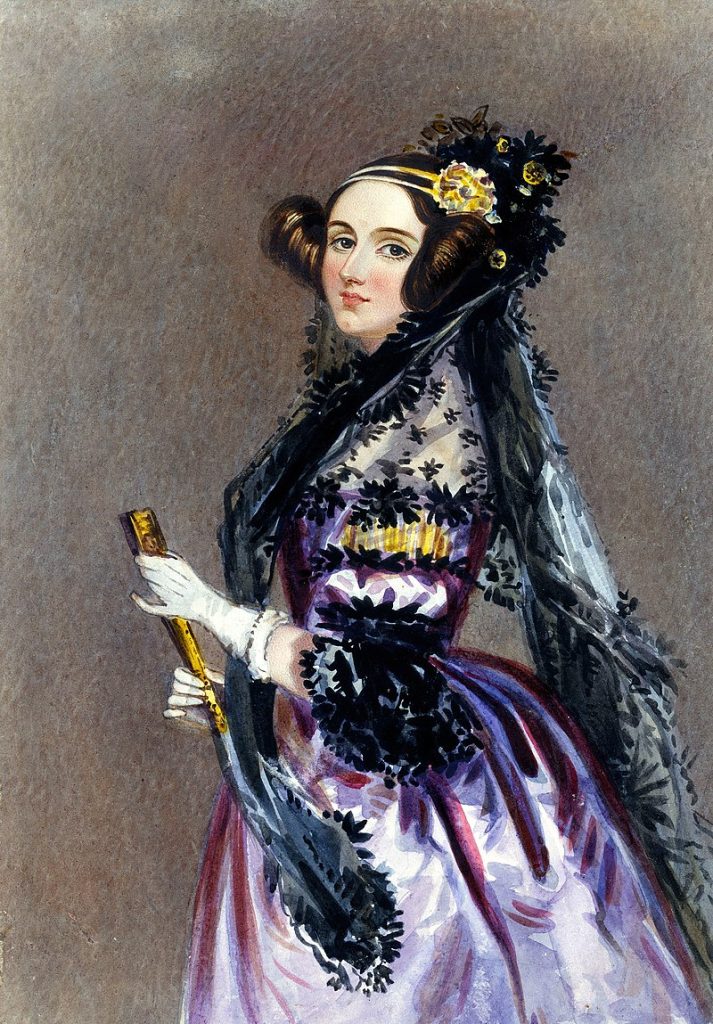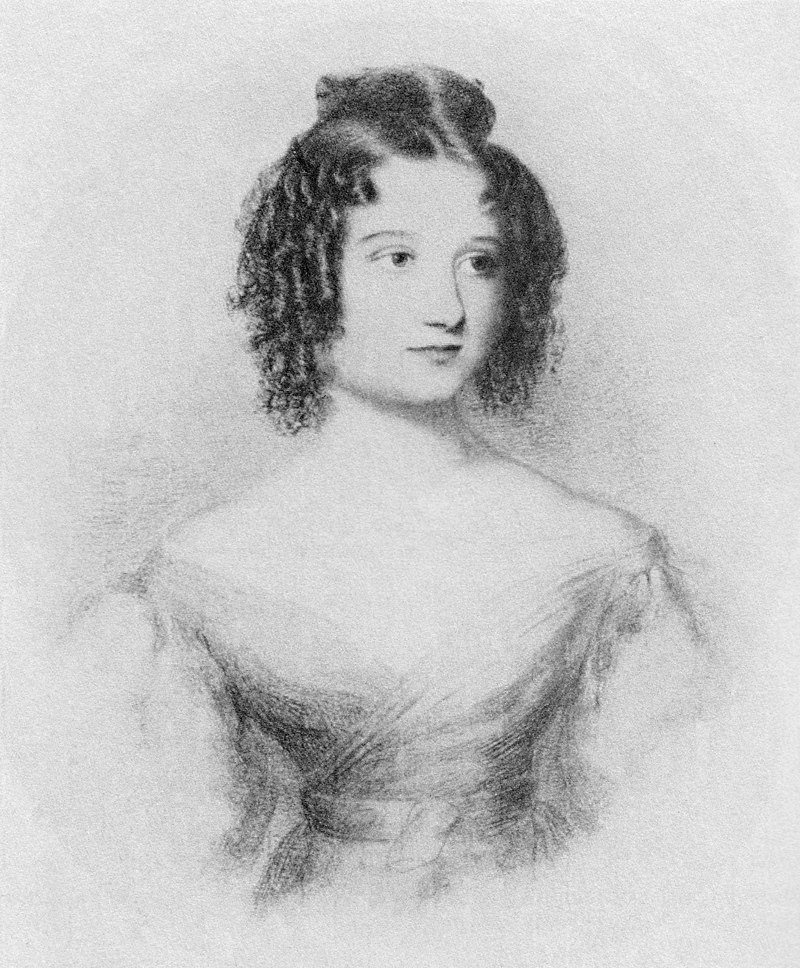Ada Lovelace – The Original Woman in Tech

A portrait of Lady Augusta Ada Lovelace.
Ada Lovelace was arguably the world’s first computer programmer.
Born Augusta Ada Byron in 1815, Ada was the only child to famous Romantic poet Lord Byron and his wife Anna Isabella Milbanke.

Ada, aged four.
Lord Byron was surrounded by rumours of infidelity and even incest. Milbanke left him weeks after Ada was born, taking Ada with her. A few months later Lord Byron left England forever.
Milbanke encouraged Ada’s interest in mathematics, hoping that it would protect her from what she perceived as Lord Byron’s madness.
Lord Byron died when Ada was eight years old. She never personally knew her father, although his fame certainly preceded him.
Ada was often sick in her childhood. She suffered from headaches that obscured her vision, and in 1829 she was paralyzed by a bout of measles. During these illnesses, Ada took refuge in her study of mathematics and technology.
As a child, Ada wanted to fly. She approached this endeavour scientifically and methodically, investigating the properties of materials for artificial wings and studying the anatomy of birds.
Ada was privately educated in mathematics and science by William Friend, William King, and Mary Somerville. Her interest in science and mathematics carried through to her life as an adult.
While Ada was brilliant at mathematics, she was also poetically inclined, and known for integrating poetry and mathematics together in order to question assumptions about the latter.

Ada, aged seventeen.
At the age of eighteen, Ada met Charles Babbage, known as “the father of computers”, at a party she attended with their mutual friend Somerville.
Babbage was impressed by Ada’s knowledge of mathematics and introduced her to the prototype of his Difference Engine, which many consider to be the first computer.
Ada was fascinated by the Difference Engine and used her relationship with Mary Somerville as an excuse to see Babbage as often as possible. Babbage in turn was fascinated by Ada’s mind, calling her the “Enchantress of Number”.
Babbage’s Difference Engine prototype was built to compute the values of polynomial functions. It could calculate a series of values using the method of finite differences, avoiding the need for multiplication or division.
After the completion of the Difference Engine fell through due to construction costs, Babbage began to design a more complex machine, called the Analytical Engine. Unlike the Difference Engine, the Analytical Engine would have been capable of fully-fledged general purpose computation and was to be programmed using punched cards.
Other features of the Analytical Engine present in modern computers include sequential control, branching, and looping. If completed, the Analytical Engine would have been the first Turing-complete computer.

The proposed Analytical Engine.
In 1835, Ada married William King and became Lady Ada King, Countess of Lovelace. She was thereafter known as Ada Lovelace.
Babbage was invited to the University of Turin in 1940 to give a seminar about his Analytical Engine. This lecture was transcribed into French by Luigi Menabrea (who would later become Prime Minister of Italy), and this was published in the Bibliothèque universelle de Genève in 1842.
Charles Wheatstone, a friend of Babbage, commissioned Lovelace to translate the paper into English. Ada supplied this paper with extra notes that were more extensive than the paper itself. She published this under the initials AAL, to hide her name, as female academics were not taken seriously at the time.
Ada’s translation included seven notes, labelled A through G. The seventh note, note G, contained an algorithm for the Analytic Engine designed to compute Bernoulli numbers. This is considered to be the first ever published algorithm written for execution on a computer. For this reason, Ada has been cited as the first computer programmer.

The first published computer program.
Because the Analytical Engine was never completed, Ada’s program was never tested.
There is academic debate over whether the title of “first computer programmer” belongs to Babbage or Lovelace. Babbage wrote his own notes providing programs that might have been executed on the Analytical Engine, but, unlike Lovelace’s program, they were never formally published.
As well as writing her algorithm, Lovelace also recognized potential in Babbage’s Analytical Engine (and the future of computing) that the inventor himself did not anticipate: the ability to work on symbols and data beyond numbers. Ada wrote:
“(The Analytical Engine) might act upon other things besides number, were objects found whose mutual fundamental relations could be expressed by those of the abstract science of operations, and which should be also susceptible of adaptations to the action of the operating notation and mechanism of the engine…Supposing, for instance, that the fundamental relations of pitched sounds in the science of harmony and of musical composition were susceptible of such expression and adaptations, the engine might compose elaborate and scientific pieces of music of any degree of complexity or extent.”
Unfortunately, Ada Lovelace died of uterine cancer at the age of 36. We can only wonder what other brilliant innovations she might have made if not for her relatively early death.
If you enjoyed this article and wish to see similar content then subscribe to my free weekly tech newsletter.
I wish you all the best in your journey of learning and discovery.
